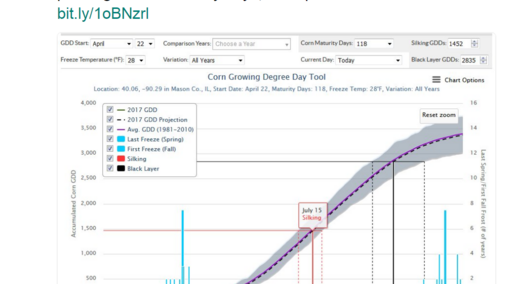Climate variability and change are major challenges for corn producers in the central United States. In a recent article in Climate Risk Management, climatologists and researchers from several Midwest universities discuss the science behind development of the Corn Growing Degree Day (Corn GDD) tool developed by the Useful to Usable (U2U) project.
The U2U project, funded by USDA to improve farm resilience and profitability in the North Central U.S., helps transform existing climate data into usable products for the agricultural community. The goal is to help producers to make better long-term plans for what, when, and where to plant, and how to manage crops for maximum yields and minimum environmental impacts.
The authors write that the Corn Growing Degree Day (Corn GDD) web-based tool "integrates current conditions, historical climate data, and projections of corn GDD through the end of the growing season based on Natonal Weather Service computer model forecasts and climatology." It helps farmers:
- assess the risk of early and late frosts and freezes that can cause crop damage;
- compare corn hybrid maturity requirements and Corn GDD projections to select seed varieties and plan activities such as spraying; and
- guide marketing decisions based on historical and projected Corn GDDs when considering forward crop pricing (i.e., futures market).
Access the Useful to Usable Corn GDD tool and find out about the science behind the tool in the journal article. Also find additional U2U decision-aid tools.
(This article was updated Feb. 28, 2018 to reflect the new URL for the Corn GDD tool.)

